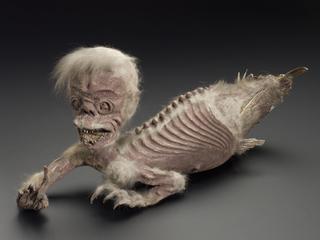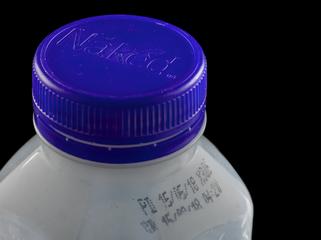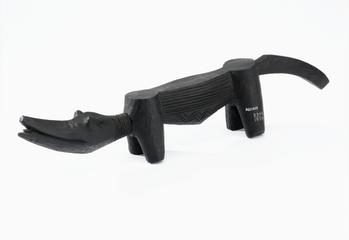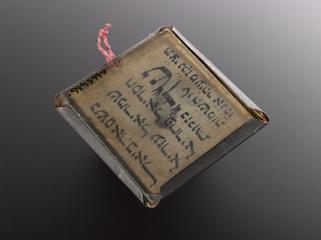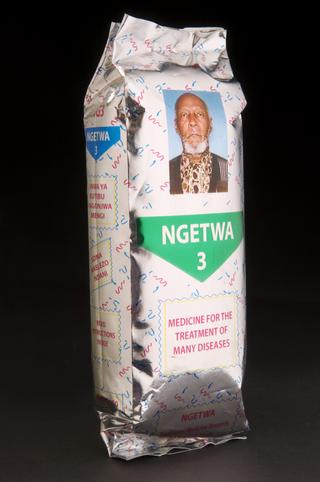




Small copper horseshoe amulet, with decorative ‘rivets’ and a loop for attachment, described as Belgian and dating from 1917 and reputedly carried by a soldier during the First World War, 1914-1918, from the Lovett collection.
The carrying of ‘lucky charms’ – as protective amulets against ill health and physical danger – is common in many cultures around the world. Horseshoes have long been associated with good luck. They were originally made of iron, which is a material long believed to have the power to repel evil spirits. They were also traditionally attached with seven nails and the number seven is a lucky number in many cultures. This small copper horseshoe, marked with seven rivet-head like decorations and a loop for attachment was reputedly carried by a soldier during the First World War, 1914-1918. Described as Belgian and dating from 1917 it is quite likely to have been constructed from a copper artillery shell casing.
The amulet was bought for the Wellcome collection in 1930 from Edward Lovett’s (1852-1933) collection of British amulets and charms. Lovett was a collector who documented different medical traditions and beliefs.
Details
- Category:
- Ethnography and Folk Medicine
- Collection:
- Sir Henry Wellcome's Museum Collection
- Object Number:
- A79968
- Materials:
- copper
- Measurements:
-
overall: 2 mm x 20 mm x 31 mm,
- type:
- amulet and superstition
- credit:
- Lovett Collection
